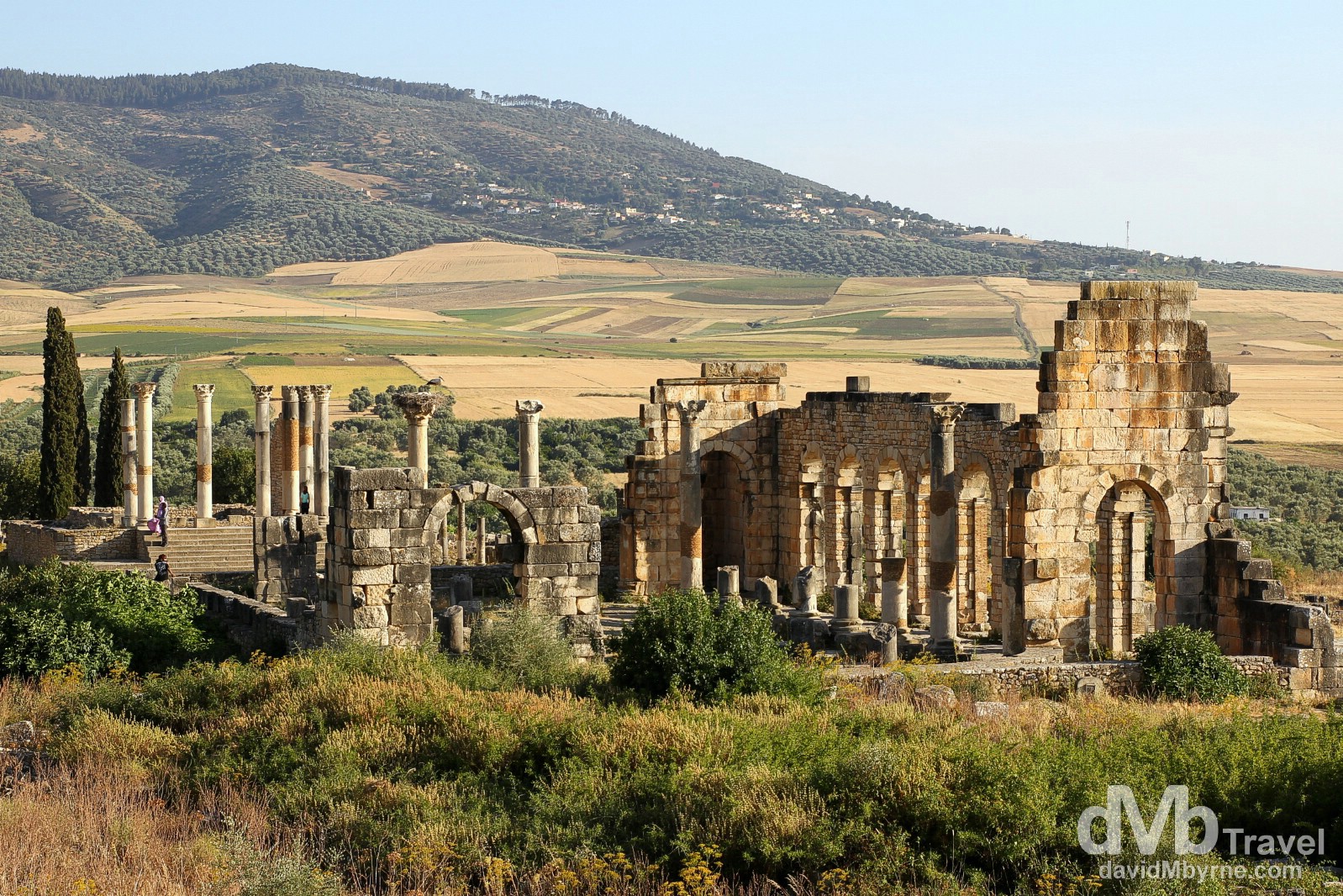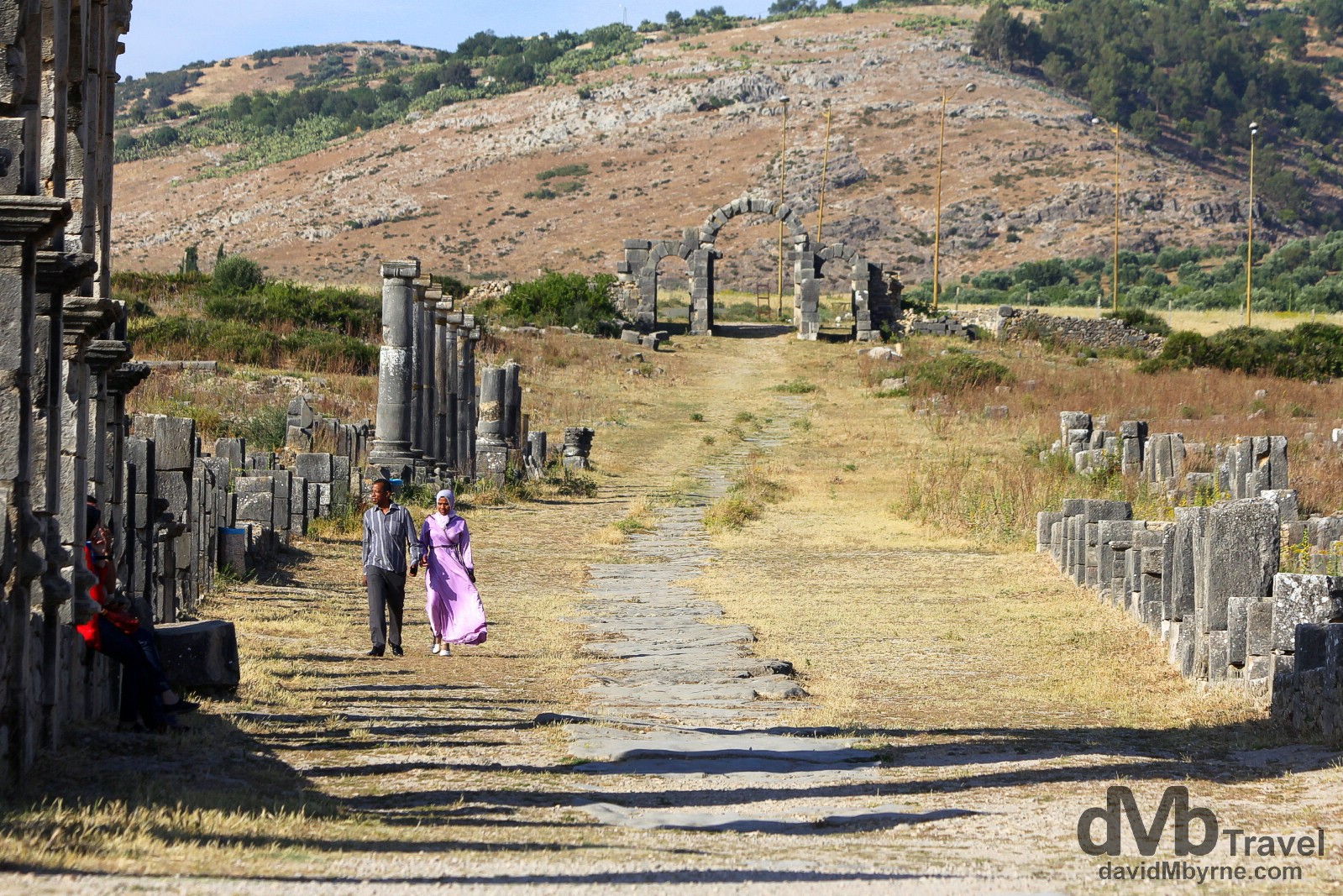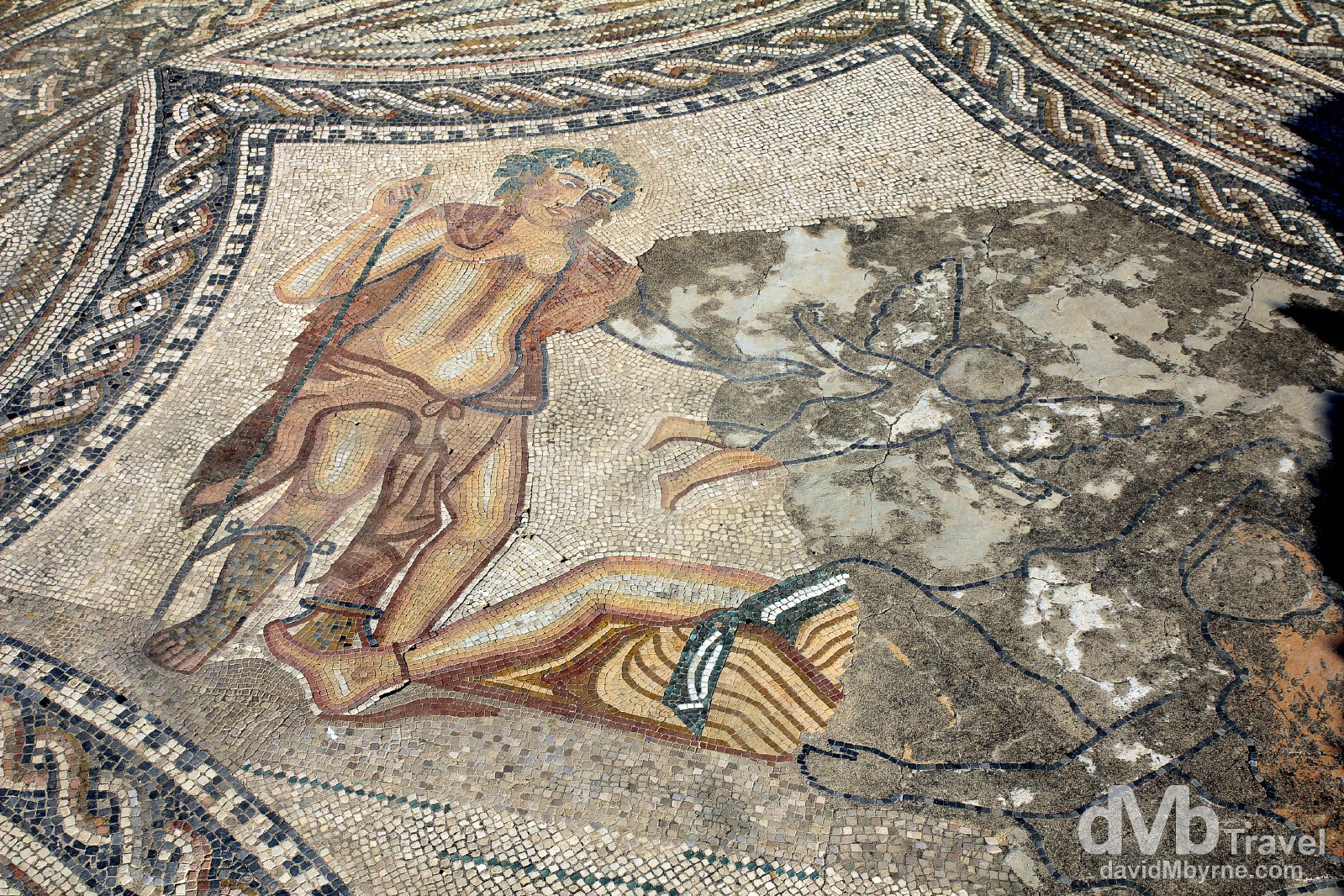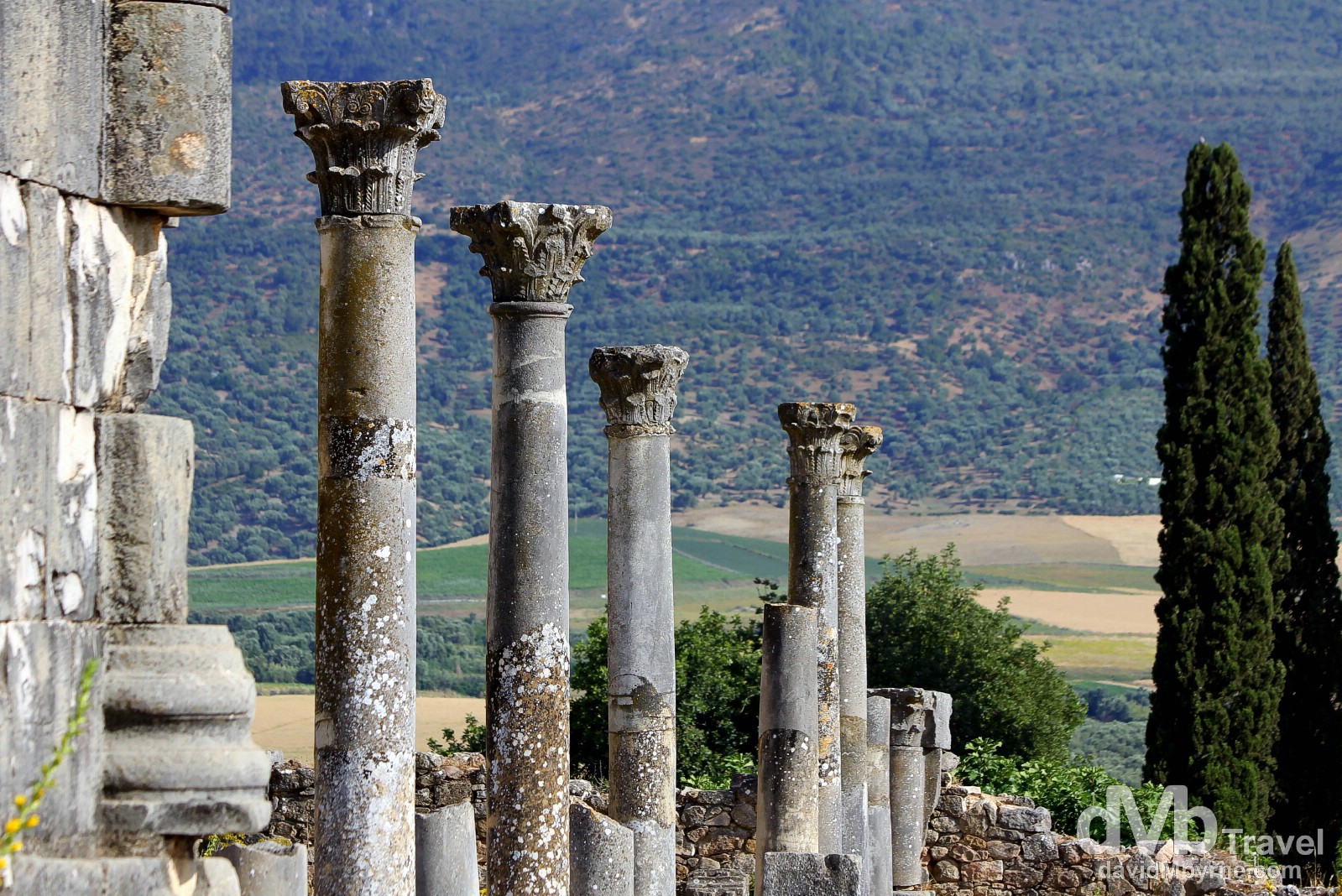A fertile plain in northern Morocco is a bit of a strange, random place to find a Roman outpost but the remnants left standing here today at Morocco’s best preserved archaeological site leave us in no doubt that yes indeed, the Romans were here nice and snug in their little town of Volubilis. But they – the Romans – didn’t hang around too long (200 years, give or take) as they couldn’t really subdue the local Berber tribes as they would have liked. They pulled out in about 280 AD but remarkably the city they left behind remained alive & active right up until the 18th century when its marble was plundered by Moulay Ismail to help build his capital at Meknes. Today Volubilis boasts an array of 2nd & 3rd century typically Roman buildings including a Forum, a Capital, a Basilica, a Triumphal Arch, a temple, & numerous opulent mansions, mostly in ruins but which boast stunning floor mosaics, the real highlight of the present-day UNESCO listed Volubilis Archaeological Site.
What remains on display today at the small but well excavated Volubilis Archaeological Site are remnants of a time when Volubilis was a colonial capital, the Roman Empire’s most remote & far-flung base at the end of the imperial road reaching down through France & Spain and into this region of northern Africa. The site was granted World Heritage status by UNESCO in 1997 with UNESCO citing the ruins as being

An overview of the 2nd & 3rd century Forum, Capital & Basilica at the Volubilis Archaeological Site. At its height Volubilis is estimated to have housed about 20,000 people with most of them involved in some way with the farming & exportation to Rome of vast amounts of wheat & olives. Less than half of the 40-hectare site has been excavated – for the most part the site is just piles of age-old protected rock & as at other Roman ruin sites (the Roman Forum in Rome & the Vesuvius-preserved Roman ruins of Pompeii immediately spring to mind) one really needs a sense of imagination when poking around to get a picture how the place once would have looked. Volubilis Archaeological Site, northern Morocco. May 25th, 2014
A section of the UNESCO- listed Roman ruins at #Volubilis #morocco @ Volubilis http://t.co/iITUHANO4b
— davidMbyrne.com (@ByrneDavidM) May 26, 2014

Storks, who have colonised some of the columns of the Capital & Basilica in Volubilis, as seen through arches of the Forum. Volubilis Archaeological Site, northern Morocco. May 25th, 2014

Strollers & late afternoon shadows on Decumanus Maximus, the site’s main thoroughfare which ends at the partially reconstructed Tangier Gate as seen in the distance. Volubilis Archaeological Site, northern Morocco. May 25th, 2014
– UNESCO commenting on Archaeological Site of Volubilis

The Volubilis Archaeological Site is famous for its floor mosaics, the vast majority of which are preserved in situ in the courtyards of the ruined mansions lining Decumanus Maximus. Other mosaics get top billing but this particular work, titled Dionysos Discovering Ariadne in the so-called Knights House, was my favourite. Although incomplete the naked Ariadne has still clearly suffered at the hand of admirers, or maybe even Muslim iconoclasts who would frown upon such raunchy visions, even if depicted in an unfinished millennia-old Roman mosaic. Volubilis Archaeological Site, northern Morocco. May 25th, 2014
______________________________________________________

